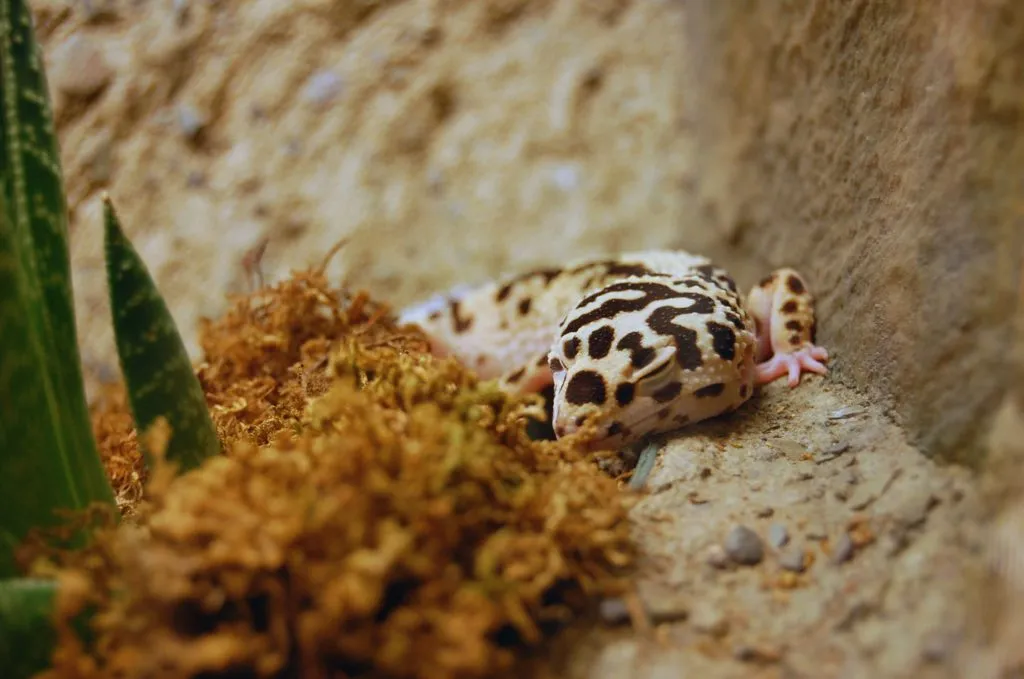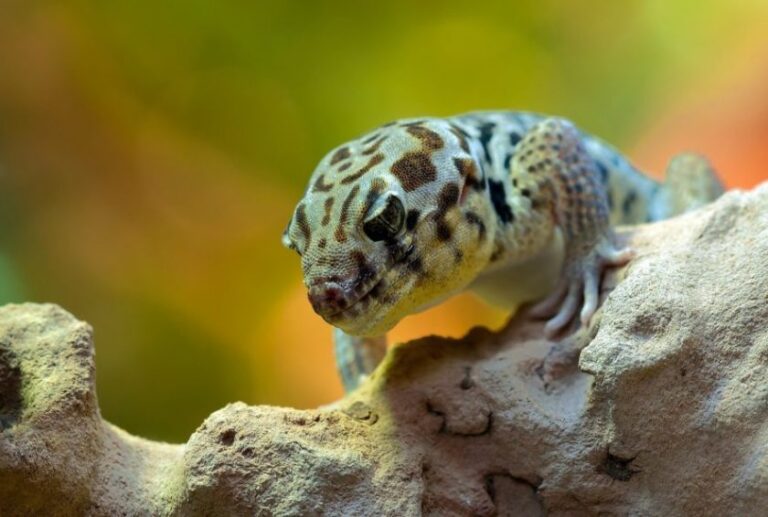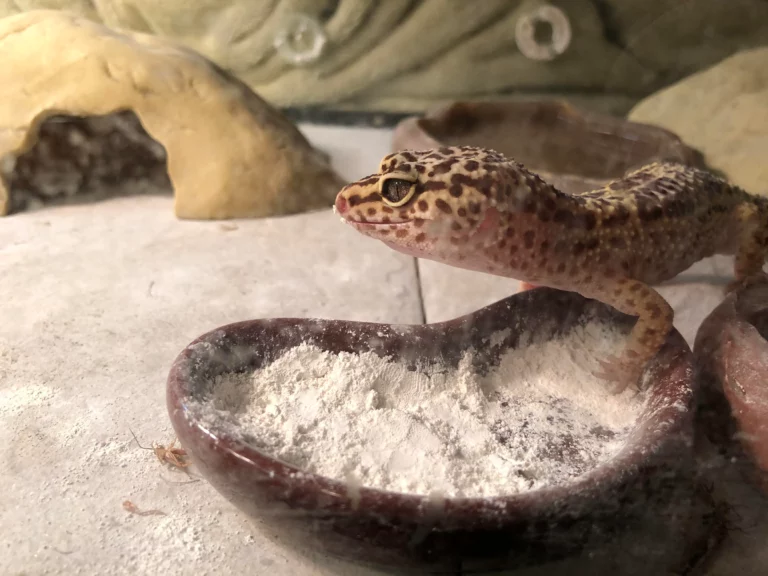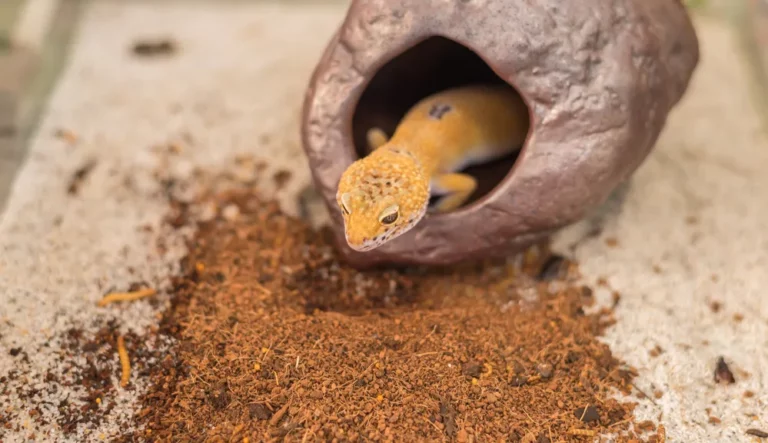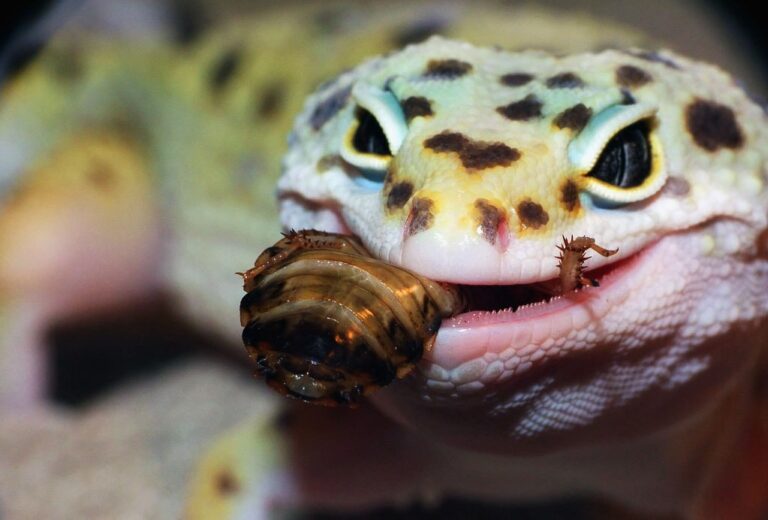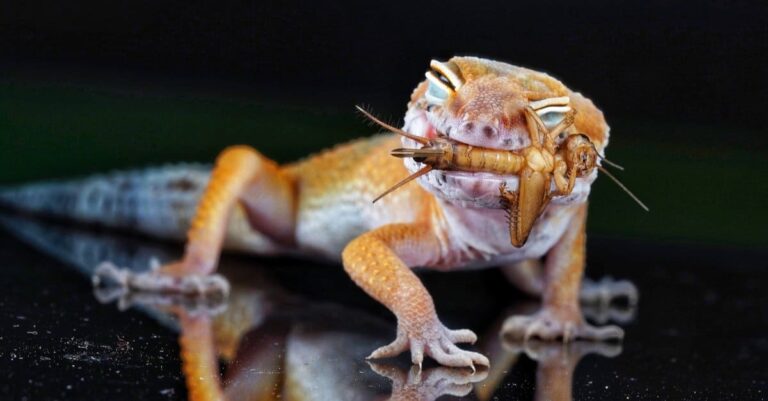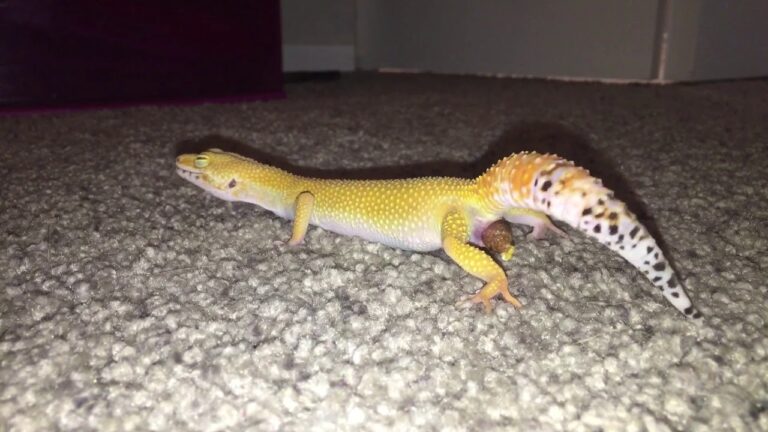Do Leopard Geckos Hibernate: Guide to Understanding Their Winter Behavior
I’ve been a reptile enthusiast since I was a kid, and they always held a special place in my heart. Their cool spots and friendly demeanor intrigued me, and I promised myself I’d have one as a pet someday.
A few years ago, I made that dream come true when Gizmo became my scaly companion. As winter approached, I began to wonder if leopard geckos hibernate like some other animals do during the cold months. I wanted to ensure my pet’s well-being and happiness.
But the answer is No, leopard geckos don’t hibernate, but they go through something called “brumation.” It’s like a long nap that can last 30-90 days, during which they don’t eat much and mostly stay in their hiding spots.
In the wild, they do this because it gets cold, food becomes scarce, and they need to save energy. However, not all pets will go through brumation, and that’s perfectly okay. It’s a natural behavior for them.
So let’s roll together.
What is Hibernation?
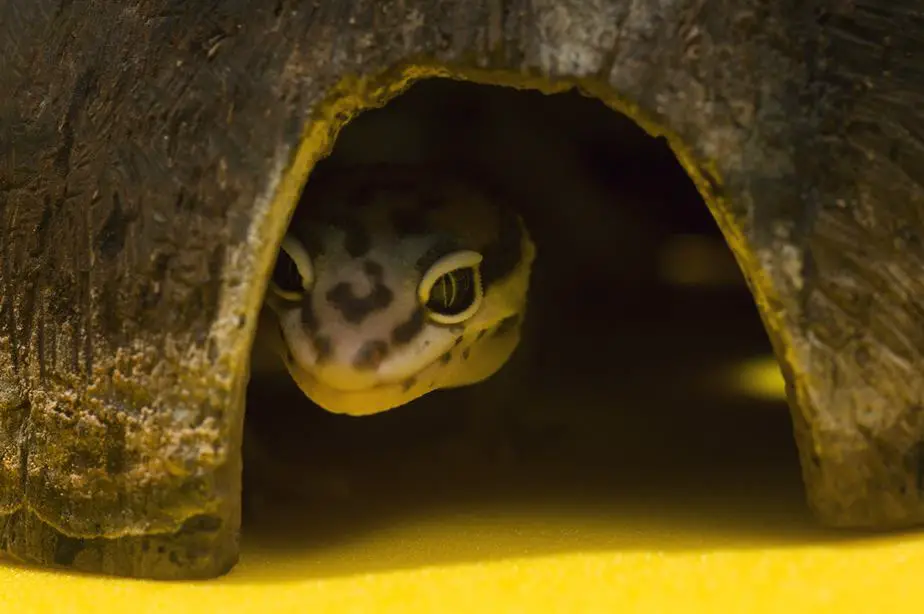
Hibernation is a remarkable survival strategy employed by animals to endure tough conditions like harsh winters or scarcity of food and warmth. Unlike regular sleep or torpor, hibernation is a prolonged and profound state of inactivity where an animal’s bodily functions slow down significantly.
Further, this adaptation allows them to conserve precious energy and resources. During hibernation, their metabolism drastically decreases, reducing the need to eat or drink frequently. It’s nature’s way of helping them weather challenging times.
However, it’s vital to note that pets do not require hibernation. Maintaining a consistent temperature and environment prevents them from entering a state of brumation, which is absolutely fine.
Leopard geckos, being ectothermic reptiles, depend on external heat sources to regulate their body temperature and metabolism. Consequently, they may experience periods of torpor or brumation, especially in response to temperature fluctuations or changes in daylight.
What are the two types of brumation?
Involuntary Brumation:
- Some of these reptiles naturally enter brumation without any influence from their owners. This can be confusing for those who are not expecting it.
- Signs of involuntary include staying on the warmer side of the tank, lethargy, slow movement, no movement at all, not eating, increased sleep, lack of bowel movements, and hiding for weeks.
- In regions with frequent weather changes, such as the Midwest in the United States, these creatures may enter brumation due to temperature and pressure shifts, even if it’s still warm outside.
- These reptiles can sense temperature changes outside their tank and respond to these shifts, even if the temperature inside is stable.
Voluntary Brumation:
- Some of these animals may enter brumation voluntarily, triggered by temperature changes set by their owners or due to weather changes.
- People who choose to induce may do it this for money-saving reasons or when planning extended vacations.
- Brumation is a natural behavior, and if done correctly during colder months, it is generally safe.
- During brumation, these creatures are still alert but may have less energy to catch food. It’s crucial to provide easily catchable food like Dubia Roaches, wax worms, and silkworms.
- Calcium supplements should be available without D3, and it’s important to monitor their eating habits. Lack of eating can lead to metabolic bone disease (MBD), a severe health issue.
- Weighing your reptile before, during, and after this it is essential to ensure they don’t lose too much weight, which can be harmful.
Why do leopard geckos hibernate?
In the Wild
- Wild leopard geckos hibernate, or brumate, in response to chilly weather. It helps them save energy and survive when it’s hard to find food.
- During winter or dry seasons, food becomes scarce in their natural habitat. Brumation lets them live off their body fat without needing to eat.
- In the wild, they often take a break from reproducing during this time to recover their energy.
In Captivity:
- Pet leopard geckos can show brumation-like behavior due to small temperature changes in their controlled environment, mimicking seasons.
- Changes in temperature and daylight can slow their metabolism, making them eat less and move less.
- Even as pets, they may have natural reproductive cycles, which can cause periods of less activity and eating.
What are the key steps to prepare a leopard gecko for brumation?
Preparing Your Leopard Gecko for Brumation:
Gradual Reduction in Food: As brumation approaches, your gecko will naturally eat less and lose weight. To help with the transition, slowly reduce its food intake.
Fasting Period: From the middle of November until the end, stop feeding your pet completely. This allows them to clear out their digestive system, preventing food from rotting during brumation.
Temperature Decrease: At the start of December, begin lowering the enclosure’s temperature to imitate the cooler conditions that trigger brumation in the wild. Regularly monitor the temperature during this phase.
Understanding Temperature and Light:
- Leopard geckos are ectothermic, meaning they rely on external heat sources to control their body temperature and metabolism. Lowering the tank’s temperature mimics the arrival of winter in their natural habitat.
- Between early and mid-December, maintain the tank temperature at 60-72°F (16-22°C). Keep a consistent day-night cycle, with nighttime temperatures not dropping below 60°F and daytime temperatures not exceeding 72°F. However, keep all light sources off during brumation.
Creating the Right Environment:
- Ensure there are plenty of hiding spots and caves for your gecko. They may burrow or seek shelter during brumation.
- Maintain a slightly humid environment to prevent dehydration during this period. However, be cautious not to increase humidity too much. Keep it around 30-40%, which is their normal range.
Tips For Caring For A Brumating Gecko
- Whether your gecko enters brumation naturally or you induce it, involving your vet is crucial. They can provide guidance and ensure the process is safe for your pet.
- Before starting brumation, have your gecko checked by the vet. This ensures they are healthy enough for the process. Sick or compromised geckos should not brumate.
- Geckos may lose some weight during brumation due to reduced eating. Weigh your pet regularly, around once a week. If they lose more than 10% of their body weight, consider ending brumation.
- Keep a reliable thermometer in the enclosure. During brumation, the temperature should be adjusted as needed for your gecko’s well-being.
- Ensure there are plenty of hiding spots in the enclosure for your brumating gecko. You might need to add new objects during this time, which can be removed when your gecko wakes from brumation.
How Long Will Leopard Gecko Spend Brumating?
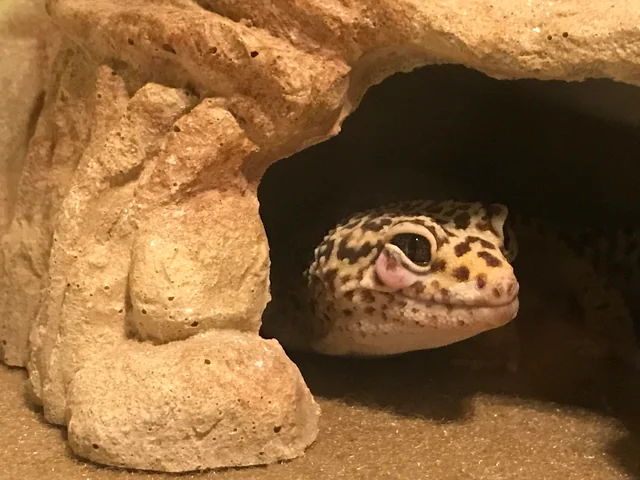
The length of brumation in leopard geckos can vary. On average, it lasts around 2 to 4 months. However, some geckos may brumate for a shorter or longer period, depending on factors like their age, health, and surroundings.
It’s important to let your pet behavior guide you. During brumation, they’ll be less active, eat less or not at all, and spend more time hiding. Keep an eye on their weight and ensure a stable environment while they go through this natural phase.
Remember, not all leopard geckos brumate, and it’s not mandatory for their well-being in captivity. If your gecko does go into brumation, provide care accordingly and be patient as they follow their natural instincts.
What is the advantage of gecko hibernation?
Some people choose to brumate their leopard geckos mainly for two reasons: saving money and breeding. For breeders, brumation helps trigger the breeding season, allowing for more opportunities to produce geckos.
However, it’s important to note that it can be stressful for them due to their slowed digestion. If you’re not a breeder, it’s generally not advised, unless you live in a consistently hot climate and want to do it for your own reasons.
In captivity, leopard geckos have a stable food supply, so it isn’t necessary for their survival. Providing them with heat, water, proper substrate, and essential supplements is more important for their well-being.
While some owners mimic natural conditions to make their geckos feel at home, brumation doesn’t serve a significant purpose in captivity unless you have specific reasons like breeding or personal preference. It’s not a requirement, and there are plenty of affordable food options available for your gecko’s diet.
FAQs
Where do geckos hibernate in the wild?
geckos in the wild hibernate in natural shelters like crevices, burrows, or underground to escape harsh weather conditions.
Is hibernation dangerous for geckos?
No, hibernation, or brumation for geckos, isn’t inherently dangerous if managed correctly. Proper care is essential to ensure their well-being.
Do geckos hibernate during winter if kept at room temperature?
No, geckos kept at room temperature might not brumate, as they rely on environmental cues like temperature and daylight changes.
When Not to Brumate?
it’s not recommended to brumate young geckos or those with health issues. Always consult a vet before inducing brumation.
When is brumation dangerous for your leopard gecko?
Brumation can be risky for underweight or ill geckos.
What should you expect from your leopard gecko after brumation?
After brumation, expect them to be less active, potentially eat less, and require monitoring.
What should you do if your gecko is hibernating?
if your gecko is brumating, maintain proper humidity and temperature, provide access to water, and avoid disturbing them. Seek vet advice if they don’t eat or show health concerns.
Final words:
To sum it up, when it comes to whether leopard geckos hibernate, here’s what I’ve found: They don’t exactly hibernate like mammals, but they do go into a similar state called brumation. This happens in response to changes in temperature and daylight, and it’s a natural behavior for them, whether they’re in the wild or kept as pets.
Some people might choose to induce brumation for specific reasons, like breeding or personal preference. However, it’s crucial to handle this carefully. Keeping an eye on the gecko’s health, providing the right conditions, and ensuring they get the proper nutrition during process is essential.
Ultimately, whether they through brumation depends on factors like their age, health, and living environment. Understanding and respecting their natural behaviors is key to taking good care of these unique creatures.

